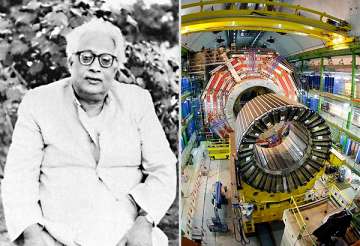Geneva, Jul 4: As all eyes today focus on the European Organisation for Nuclear Research, famously known as CERN, Indian scientific and technological contributions are among the many that keeps the world's biggest particle physics laboratory buzzing.
In a ‘quantum' leap in physics, CERN scientists today claimed to have spotted a sub-atomic particle “consistent” with the Higgs boson or ‘God particle', believed to be a crucial building block that led to the formation of the universe.
There is an intrinsic Indian connection to what is happening at CERN - Satyendra Nath Bose. It is Bose after whom the sub-atomic particle ‘boson' is named.
His study changed the way Particle Physics has been studied ever since. The Higgs Boson is a particle that is theoretically the reason why all matter in the Universe has mass.
The name Higgs Boson came from a British scientist Peter Higgs and Bose. The work done by Bose and Albert Einstein, later added by Higgs, lead to this pioneering day.
“India is like a historic father of the project,” Paolo Giubellino, CERN spokesperson had said back in October last year when PTI visited the facility.
At the core of the CERN, spread over two countries as it is situated near the Swiss-Franco border, is the 27-km long tunnel, over 70 metres beneath the ground, where the Large Hadron Collider (LHC) or commonly referred to as the Big Bang experiment was conducted last year.
The experiment had aimed to recreate the conditions of the Big Bang, when the universe is thought to have exploded into existence about 14 billion years ago.
The CERN runs a number of experimental projects and over 100 Indian scientists are working round the clock.
Latest World News
